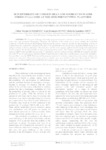Por favor, use este identificador para citar o enlazar este ítem:
http://www.alice.cnptia.embrapa.br/alice/handle/doc/1073261Registro completo de metadatos
| Campo DC | Valor | Lengua/Idioma |
|---|---|---|
| dc.contributor.author | GUIMARÃES, C. M. | pt_BR |
| dc.contributor.author | STONE, L. F. | pt_BR |
| dc.contributor.author | ZITO, R. K. | pt_BR |
| dc.date.accessioned | 2017-07-27T11:11:11Z | pt_BR |
| dc.date.available | 2017-07-27T11:11:11Z | pt_BR |
| dc.date.created | 2017-07-27 | pt_BR |
| dc.date.issued | 2017 | pt_BR |
| dc.identifier.citation | Bioscience Journal, Uberlândia, v. 33, n. 4, p. 871-880, July/Aug. 2017. | pt_BR |
| dc.identifier.issn | 1981-3163 | pt_BR |
| dc.identifier.uri | http://www.alice.cnptia.embrapa.br/alice/handle/doc/1073261 | pt_BR |
| dc.description | The great challenge of breeding programs focused on tolerance to water stress is the precise, in large scale, and automated phenotyping. Therefore, the objective of this study was to assess whether the controlled conditions of SITIS Automated Phenotyping Platform and the protocol used are suitable for discriminating cultivars of common bean and soybean for tolerance to this stress. Two experiments were carried out in randomized block design, in a split plot scheme, with four replications. The main plots had five water regimes, applied after flowering: daily replacement of 100 (control), 80, 60, 40, and 20% of water evapotranspired in control. The subplots consisted of two common bean cultivars (BRS Pontal and BRS Pérola) in the 1st experiment, and two soybean cultivars (MG/BR 46 Conquista and BR-16) in the 2nd one. In each species, the first cultivar is more tolerant to water stress, and the second one is more susceptible. It is possible to use the SITIS Platform and the proposed protocol to evaluate common bean and soybean cultivars for tolerance to water stress. The common bean cultivars evaluated were more sensitive to this stress than soybeans. The best water status of cultivars BRS Pontal and MG/BR 46 Conquista under water stress confirmed their greater tolerance. | pt_BR |
| dc.language.iso | eng | eng |
| dc.rights | openAccess | eng |
| dc.subject | Fenotipagem | pt_BR |
| dc.subject | Temperatura das folhas | pt_BR |
| dc.subject | Plataforma SITIS | pt_BR |
| dc.title | Susceptibility of common bean and soybean to water stress evaluated at the sitis phenotyping platform. | pt_BR |
| dc.type | Artigo de periódico | pt_BR |
| dc.date.updated | 2017-07-27T11:11:11Z | pt_BR |
| dc.subject.thesagro | Feijão | pt_BR |
| dc.subject.thesagro | Phaseolus vulgaris | pt_BR |
| dc.subject.thesagro | Soja | pt_BR |
| dc.subject.thesagro | Glycine max | pt_BR |
| dc.subject.thesagro | Evapotranspiração | pt_BR |
| dc.subject.thesagro | Deficiência hídrica | pt_BR |
| dc.subject.nalthesaurus | Soybeans | pt_BR |
| riaa.ainfo.id | 1073261 | pt_BR |
| riaa.ainfo.lastupdate | 2017-07-27 | pt_BR |
| dc.identifier.doi | http://dx.doi.org/10.14393/BJ-v33n4a2017-36731 | pt_BR |
| dc.contributor.institution | CLEBER MORAIS GUIMARAES, CNPAF; LUIS FERNANDO STONE, CNPAF; ROBERTO KAZUHIKO ZITO, CNPSo. | pt_BR |
| Aparece en las colecciones: | Artigo em periódico indexado (CNPSO)  | |
Ficheros en este ítem:
| Fichero | Descripción | Tamaño | Formato | |
|---|---|---|---|---|
| 871.pdf | 553.67 kB | Adobe PDF |  Visualizar/Abrir |









